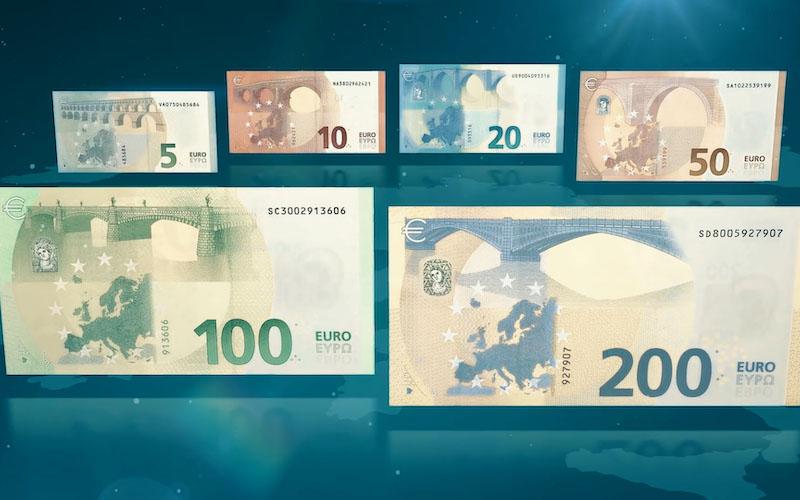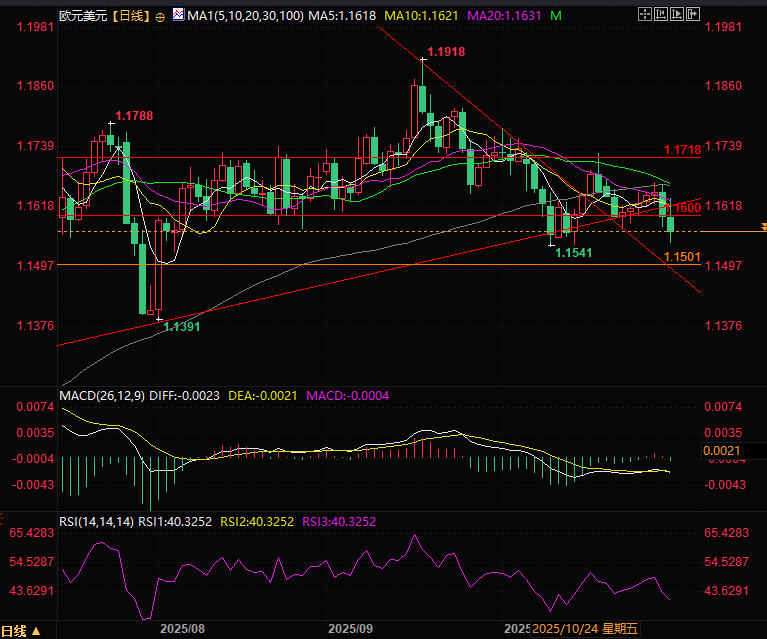The US dollar launched a "blitzkrieg" late at night. Can the European Central Bank hold its ground with a "remaining data lineup"?
2025-10-30 21:47:43

Market attention has now shifted to the European market, with several key economic data points dominating short-term market sentiment. Germany's preliminary Q3 GDP figure was flat quarter-on-quarter (0.0%), compared to a previous reading of -0.3%. This data indicates that the German economy is stagnating, and two consecutive quarters of declining output is a common definition of a recession. Italy also turned to zero growth after contracting by 0.1% in Q2.
However, the weak growth results were insufficient to prompt the European Central Bank to cut interest rates. The ECB's hands-off stance contrasts sharply with the Federal Reserve, which cut its benchmark interest rate by a quarter of a percentage point early Thursday morning and is struggling with whether to cut rates again before the end of the year.
Regarding price data, Germany's preliminary CPI for the third quarter remained stable at 0.2% quarter-on-quarter, while Spain's preliminary CPI for the third quarter fell to 2.9%, slightly lower than the previous value of 3.0%, indicating a moderate easing of inflationary pressures in some parts of the Eurozone.
The European Central Bank will keep its main refinancing rate unchanged at 2.15%. Investors are currently focused on President Christine Lagarde's press conference, trying to glean potential clues about future easing policies.
The preliminary core CPI for the Eurozone, to be released on Friday, is expected to be 2.3%, slightly lower than the previous value of 2.4%; the overall CPI is expected to slow from 2.2% to 2.1%. This series of expected data indicates that the overall inflation level in the Eurozone is gradually moving closer to the central bank's target. However, Germany's October CPI broke expectations first, with the market forecast of 2.2% and the actual figure released by Germany being 2.3%.
This also leaves the core CPI figures for the Eurozone, which are set to be released on Friday, uncertain.
Technical Analysis:
The euro traded against the US dollar throughout the day with a pattern of rising, falling, and then rebounding. The daily chart shows that after breaking below the upward trend line, the euro retested the upward trend line and continued to fall, breaking below the important level of 1.1600. However, the positive aspect for the euro is that it did not break below the previous low of 1.1541, and the decline narrowed instantly following the European Central Bank's interest rate decision. Currently, the euro is expected to shift from a moderate upward trend to a range-bound trading pattern.

(Euro/USD daily chart, source: FX678)
At 21:44 Beijing time, the euro was trading at 1.1575/76 against the US dollar.
- Risk Warning and Disclaimer
- The market involves risk, and trading may not be suitable for all investors. This article is for reference only and does not constitute personal investment advice, nor does it take into account certain users’ specific investment objectives, financial situation, or other needs. Any investment decisions made based on this information are at your own risk.





















